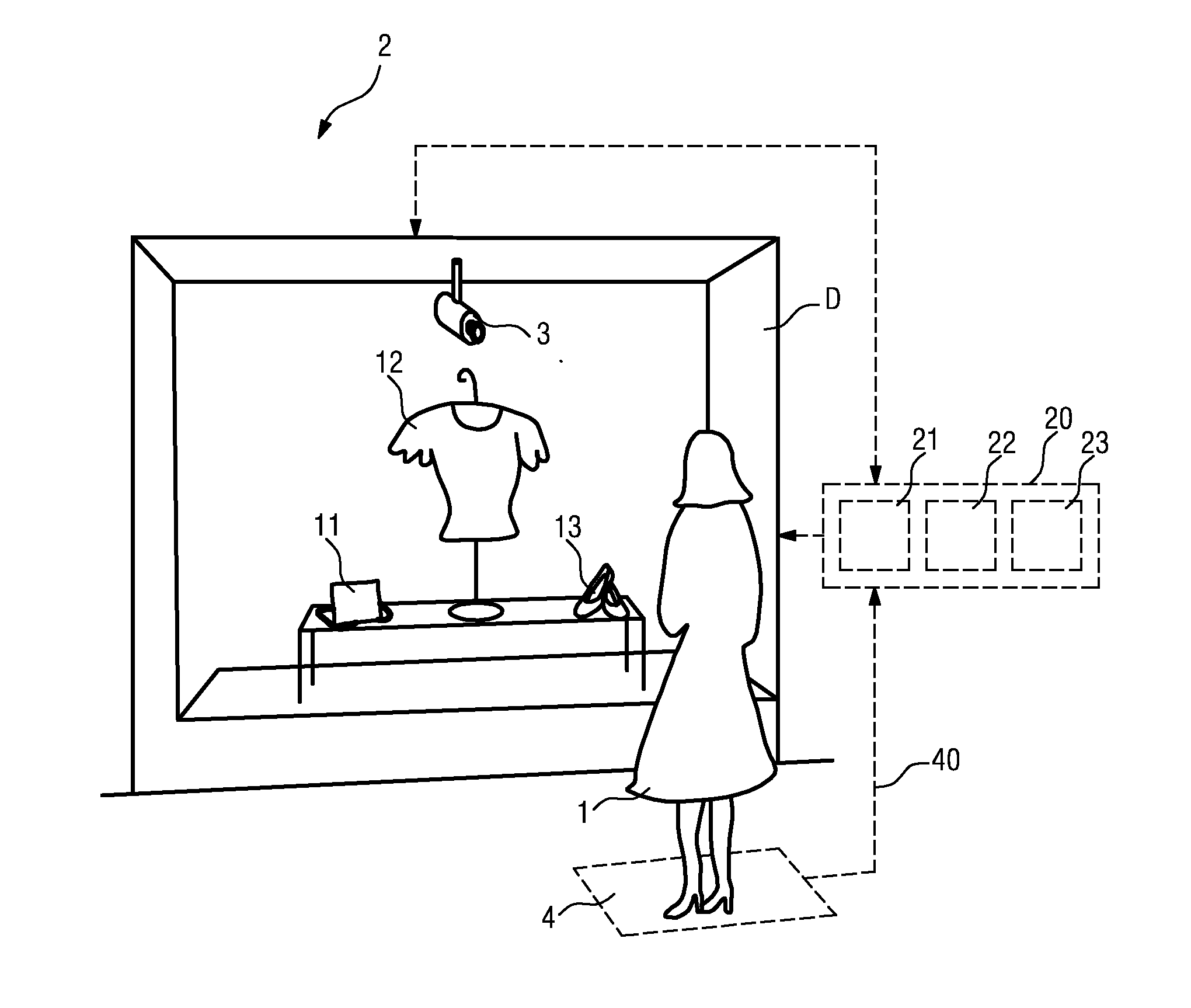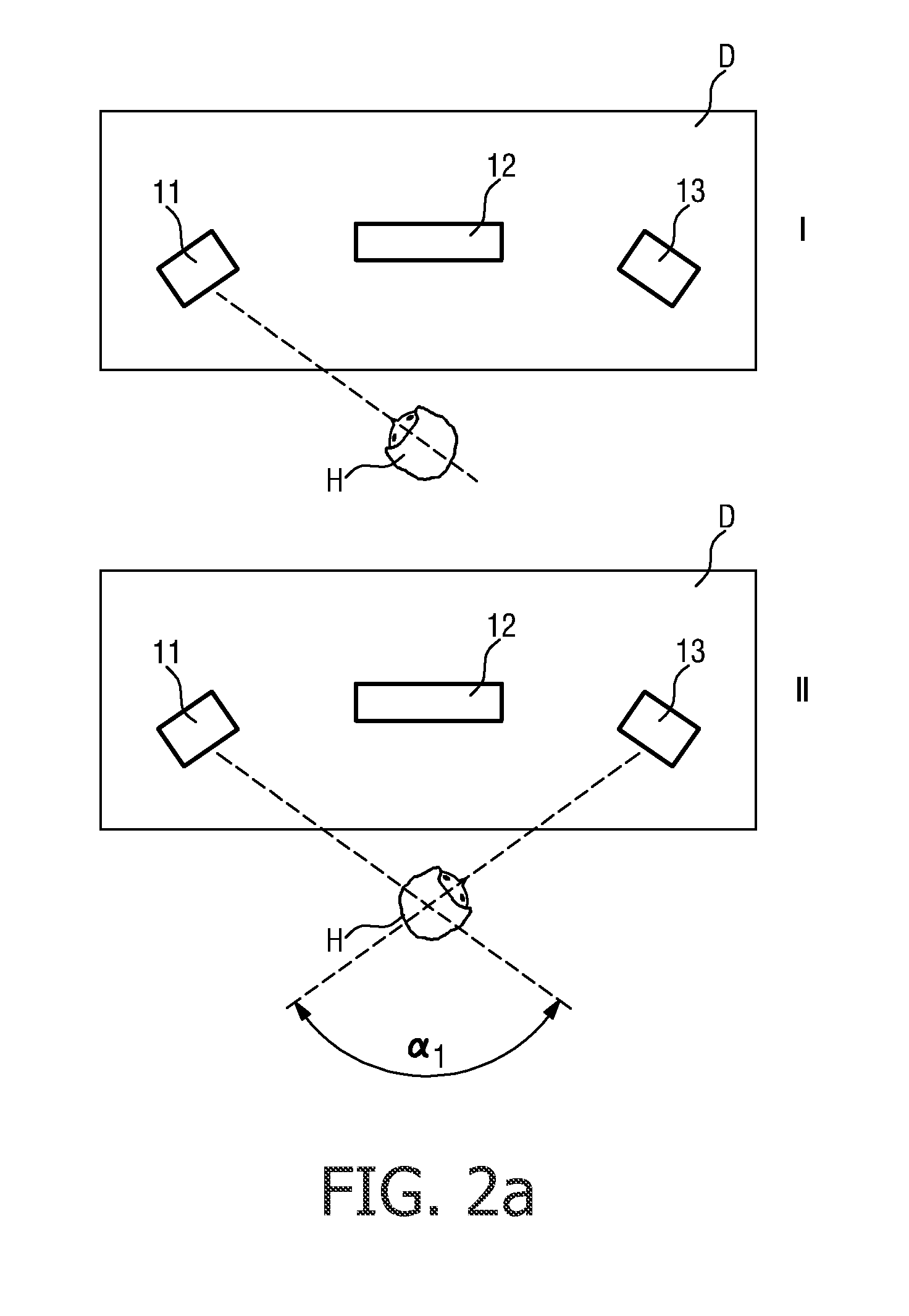Method of and system for determining a head-motion/gaze relationship for a user, and an interactive display system
a technology of eye-gaze relationship and interactive display system, which is applied in the field of method and system for determining a head-motion/gaze relationship for a user, and an interactive display system, can solve the problems of complex and expensive systems, eye-gaze tracking becomes more difficult to perform with accuracy, and the user would probably just be perceived as irritating, etc., to achieve comfortable looking, wide separation, and more accurate calibration
- Summary
- Abstract
- Description
- Claims
- Application Information
AI Technical Summary
Benefits of technology
Problems solved by technology
Method used
Image
Examples
Embodiment Construction
[0054]FIG. 1 shows a user 1 in front of a display area D, in this case a potential customer 1 in front of a shop window D. For the sake of clarity, this schematic representation has been kept very simple. In the shop window D, items 11, 12, 13 are arranged for display. A detection means 4, in this case a pressure mat 4, is located at a suitable position in front of the shop window D so that the presence of a potential customer 1 who pauses in front of the shop window D can be detected. An observation means 3, or head tracking means 3, with a camera arrangement is positioned in the display area D such that the head motion of the user 1 can be tracked as the user 1 looks at one or more of the items 11, 12, 13 in the display. The head tracking means 3 can be activated in response to a signal 40 from the detection means 4 delivered to a control unit 20. Evidently, the head tracking means 3 could, if appropriately realized, be used in lieu of the detection means 4 for detecting the prese...
PUM
 Login to View More
Login to View More Abstract
Description
Claims
Application Information
 Login to View More
Login to View More - R&D
- Intellectual Property
- Life Sciences
- Materials
- Tech Scout
- Unparalleled Data Quality
- Higher Quality Content
- 60% Fewer Hallucinations
Browse by: Latest US Patents, China's latest patents, Technical Efficacy Thesaurus, Application Domain, Technology Topic, Popular Technical Reports.
© 2025 PatSnap. All rights reserved.Legal|Privacy policy|Modern Slavery Act Transparency Statement|Sitemap|About US| Contact US: help@patsnap.com



